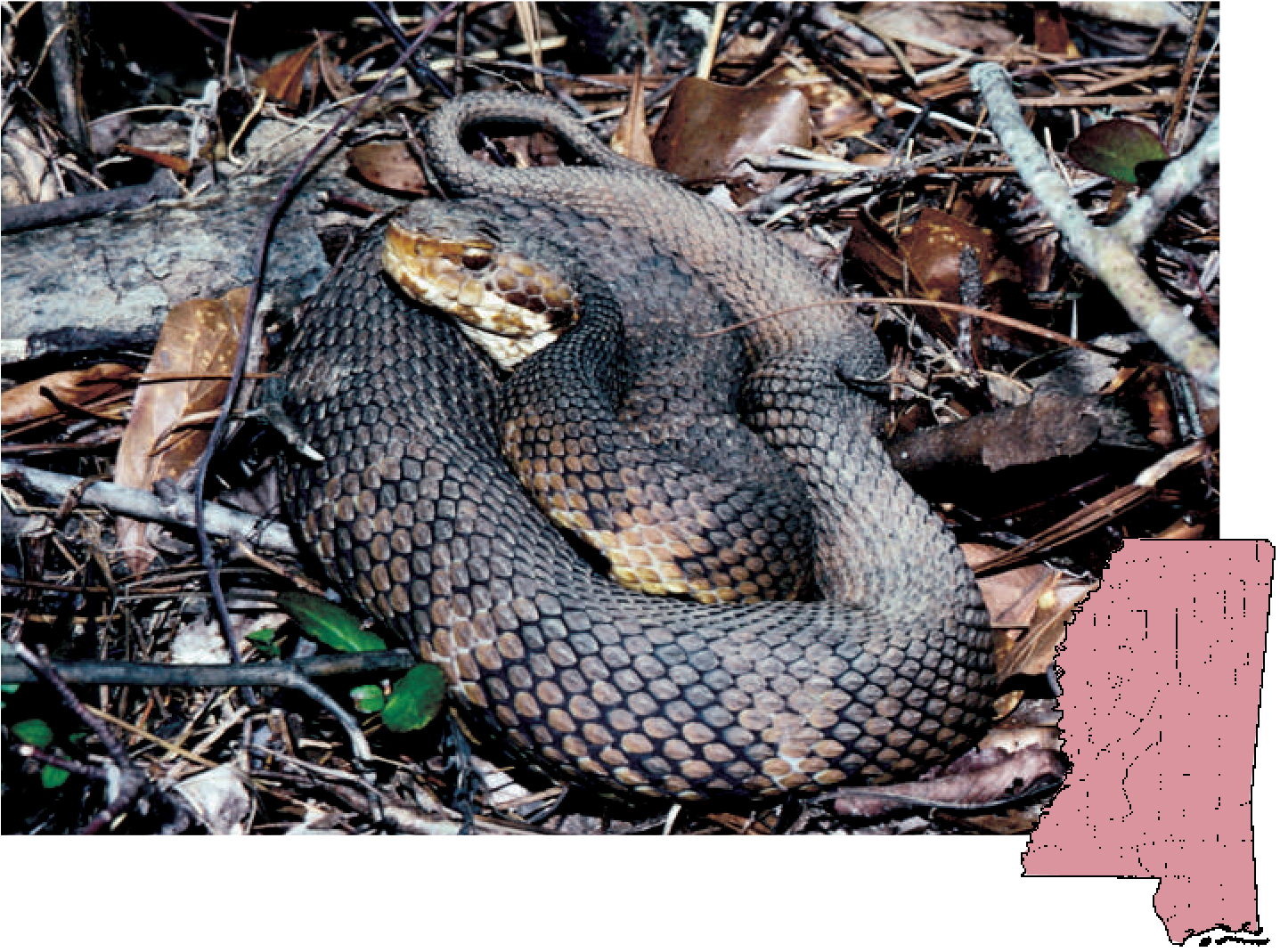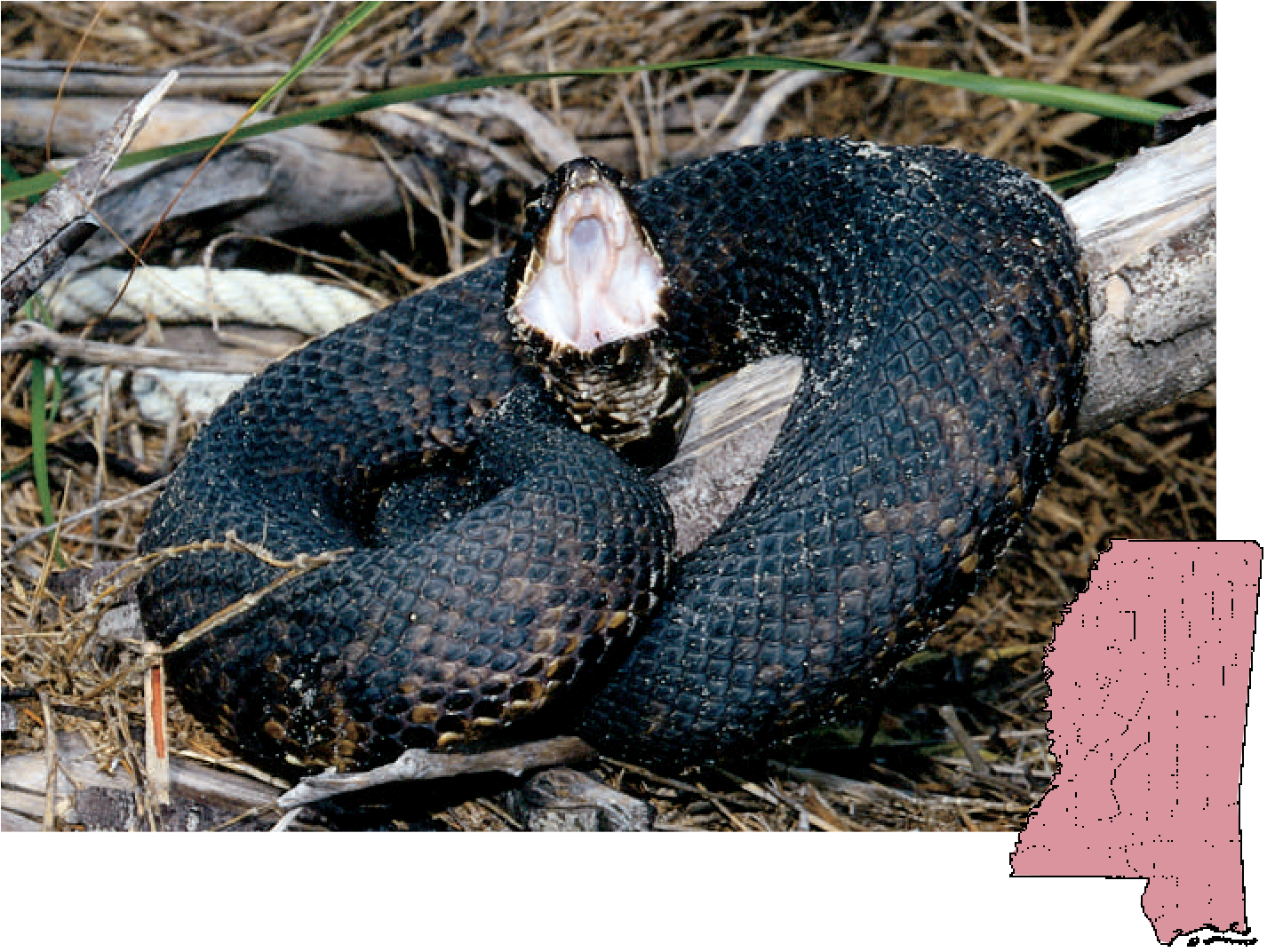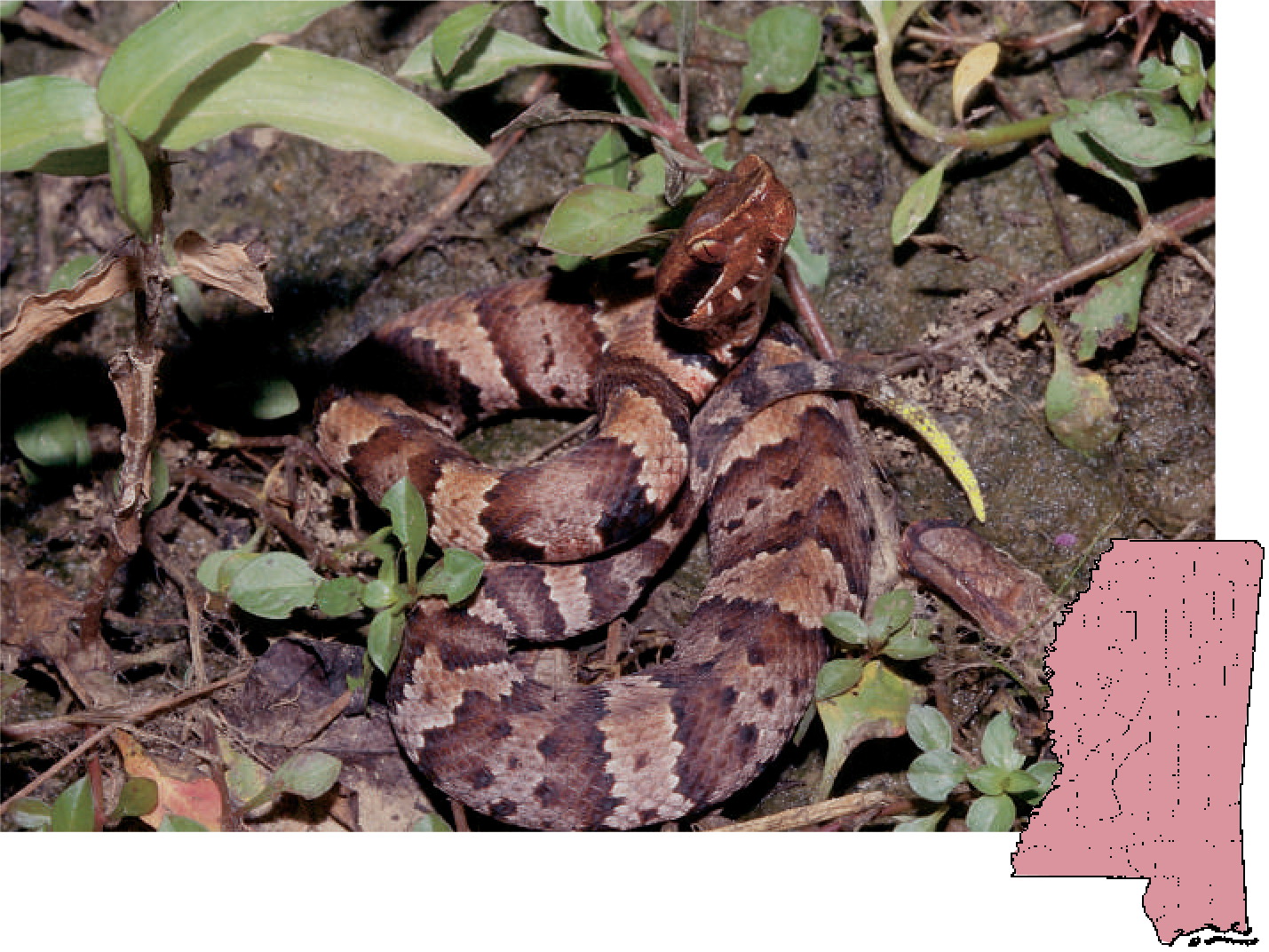






vertical bars on lipsThe average length is 2 1/2 to 4 feet. This is a very heavy-bodied snake. Adults are brown to khaki-green to black with indistinct wavy, darker crossbands. Populations from the Delta and immediate Gulf Coast are often extremely dark. Over much of the state, adults are more brownish or yellowish-brown. Baby cottonmouths are beautifully marked with reddish crossbands on a pink or rusty ground color. These juveniles resemble their close relative the copperhead. However, baby cottonmouths have a wide dark band on the side of the face while all ages of copperheads display a narrow line. Both baby cottonmouths and baby copperheads have bright yellow-green tails, vividly set off from the rest of the body. Cottonmouths of all ages gape their mouth wide open when threatened.
This medium to large pit viper goes by several common names in Mississippi, including “water moccasin” and “stump-tailed moccasin.” It can be easily confused with several other species of large, dark-colored, thick-bodied, wide-headed but utterly harmless watersnakes (genus Nerodia). All snakes found near the water should be treated with caution.
The cottonmouth frequents creeks, swamps, bayous, and virtually all aquatic habitats in the state, including brackish coastal marshes and the barrier islands. Occasional specimens turn up seemingly far from water. They are often abundant in suitable habitats throughout Mississippi. The diet is quite varied, including fish, frogs, snakes and other reptiles, small birds, and mammals.
Cottonmouths are nervous and irritable when cornered. Upon confronting a potential enemy, the snake often opens its mouth, exposing the light interior. This “cotton-white” color contrasts well against the dark snake and draws attention to it, allowing one the opportunity to see the snake and retreat before an actual encounter. The cottonmouth is our primary snakebite species in Mississippi and extremely serious medical implications have been documented following bites of this snake.
Of the 55 different kinds of snakes in Mississippi, only six are venomous. Harmless snakes are more common, but encounters with venomous snakes do occur. As a resident of Mississippi, it is important that you learn to identify the species of…